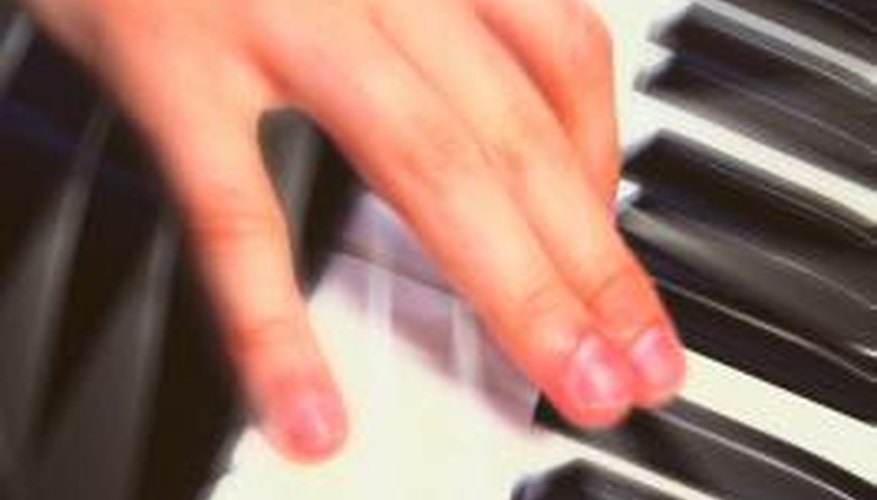The Roland EP9 is a now discontinued digital piano. It has 88 weighted keys, which permits touch-sensitivity for a more authentic playing experience. If your EP9 is not performing to its optimum, troubleshooting is essential to determine the location, nature and severity of the problem. To effectively troubleshoot the keys, key weights, circuit board connections and socket soldering, it's necessary to disassemble the EP9. After troubleshooting, you can either fix the problem yourself or take it to a repair specialist.
- The Roland EP9 is a now discontinued digital piano.
- To effectively troubleshoot the keys, key weights, circuit board connections and socket soldering, it's necessary to disassemble the EP9.
Remove the power cable and foot pedal cable from the rear of the EP9.
Remove the EP9 from its stand. The EP9 is marketed as a "digital upright" piano, but it is a standard, stand-alone keyboard-type digital piano. Lift the EP9 up and away from the stand and place it on a flat surface.
Make two supports for the EP9 on your work bench to raise the piano away from the surface. This prevents the dials and sliders from getting squashed or scratched. You can use any material as long as it supports the weight of the piano without scratching the surface. A small pile of books is fine. Place the two piles approximately 13 inches apart so they support the edges of the piano.
- Make two supports for the EP9 on your work bench to raise the piano away from the surface.
- You can use any material as long as it supports the weight of the piano without scratching the surface.
Remove the screws attaching the bottom panel to the chassis of the piano. Place the screws on a piece of electrical tape, in the order you removed them. This prevents them from rolling. Also, it's easier to replace screws in their original holes.
Place the bottom panel to one side.
Unclip the plastic flex cable plugs attaching the cable bundles to the circuit board. Tape these in a loop to keep them out of the way.
Remove the series of brass screws anchoring the circuit board to the bottom of the chassis. Put the screws on a separate piece of electrical tape.
- Place the bottom panel to one side.
- Remove the series of brass screws anchoring the circuit board to the bottom of the chassis.
Grip the key assembly by crooking your fingers under the ridge on the bottom. The key assembly is the long plastic tray housing the keys. Lift it upward and toward you then gently place it to on side. Removing this enables you to replace key weights but also provides sufficient room to examine solder joints inside the chassis.
Push down on the back of each key and then slide a flathead screwdriver underneath to pry it out from the key assembly. The keys aren't fixed but do require some manoeuvring to be freed. To remove the weight from inside the key, hold the key in your strong hand and gently slap it into your open palm. The weight should slide out after a few goes.
TIP
While you have the piano chassis open, spray a small amount of plastic-safe contact cleaner onto the potentiometers on the back of the dials.
